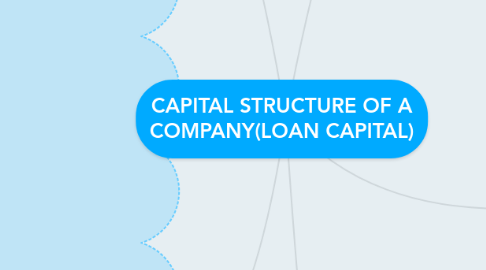
1. CHARGES
1.1. Two main types
1.1.1. Fixed charge
1.1.1.1. A form of security attaches to a specified, identifiable property of a company
1.1.1.2. Property charge-land-will confer interest to chargee not ownership
1.1.1.3. Variable assets-debt owing to a company
1.1.1.4. A holder of a fixed charge may force the sale of the property in order to secure payment of a debt
1.1.1.5. He takes priority over other creditors in respect to payment of debt
1.1.2. Floating charge
1.1.2.1. Not a specific charge attached on the assets of a company.
1.1.2.2. Can be created against all the property of company, whether present or future.
1.1.2.3. A floating charge is a form of security granted to a creditor over general assets of a company which may change from time to time in the normal course of business (e.g. stock)
1.1.2.4. The company can continue to use the assets in its business until an event of default occurs and the charge crystallizes
1.1.2.5. The secured creditor can realize the assets to recover his debt, usually by appointing an administrative receiver, and obtain the net proceeds of sale subject to the prior claims of the preferential creditors (e.g. Customs & Excise or Inland Revenue)
1.1.2.6. Case: Re Yorkshire Woolcombers Association [1930]
1.1.2.7. Crystallization of floating charge
1.1.2.7.1. The events which leads to crystallization are
1.2. Created by company in favor of lender
1.3. REGISTRATION
2. PRIORITY OF CHARGES
2.1. General rule
2.1.1. As a general rule, secured creditors will have priority over unsecured creditors.
2.1.2. Among secured creditors, the fixed chargee will have priority over the floating charge.
2.1.3. Among unsecured creditors, the preferential creditors listed in Section 292 of Companies Act will have priority over other unsecured creditors.
2.1.4. Where the equities are equal, the first in time prevails.
2.2. Exceptions
2.2.1. A charge will lost its priority if its not registered as required under Companies Act.
2.2.2. Sometimes, a subsequent lender will include a clause in his charge to the effect that the subsequent charge will rank in pari passu with or in priority to an earlier floating charge.
3. INTRODUCTION
3.1. A company may require funds from time to time to run its business activities.
3.2. A trading company has an implied power to borrow money to an extent which is reasonable and necessary for the purpose of its business unless the memorandum or article expressly prohibits it.
3.3. This implied power extends to the power of the company to give security for the loan by creating charges over its assets.
4. DEBENTURES
4.1. A company may borrow money by issue of debentures which are in reality promises to repay the sum borrowed and are executed under the seal of the company.
4.2. A debenture can be a document issued to such lender and is then a self contained security entitling the holder to take action in his own name.
4.3. A debenture is merely a promise to repay the money borrowed.
4.4. There is no precise legal meaning attached to the word debenture
4.5. Chitty J said in Levy v Abercorris Slate & Slab Co:
4.5.1. “a debenture means a document which either creates a debt or acknowledges it, and any document which fulfills either of those conditions is a debenture”
4.6. Section 4 (1) of Companies Act
4.6.1. The definition of debenture is singularly unhelpful
4.6.2. “debenture includes any debenture stock, bonds, notes and any other securities of a corporation whether constituting a charge on the assets of the corporation or not”.
4.7. Debenture which is not secured by a charge over the property of the company is an unsecured debenture.
4.7.1. the holder is the unsecured creditor of the company.
4.8. But when the asset or property of the company is charged to the debenture holder, it is secured debenture.
4.8.1. its holder is the secured creditor.
5. REGISTRATION
5.1. Section 108 (1)
5.1.1. Where a charge is created it need to be registered within 30 days after the date of creation without prejudice to any contract or obligation for repayment
5.1.2. If not it will become void against liquidator and creditor of the company and when a charge becomes void.
5.2. Section 108 (2)
5.2.1. Money secured thereby shall immediately become payable.
5.3. Section 114
5.3.1. The court may sanction registration after the expiration of the 30 days if an acceptable explanation (the grounds are to be specified) is given.

